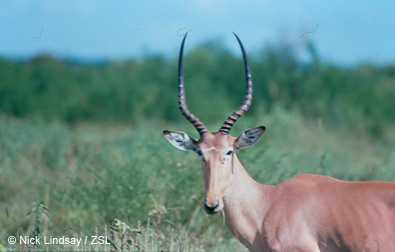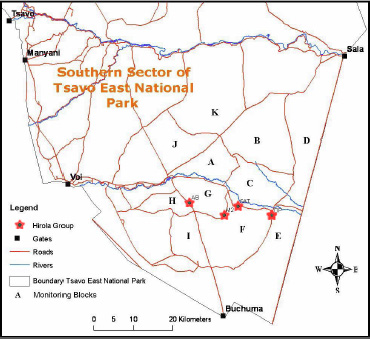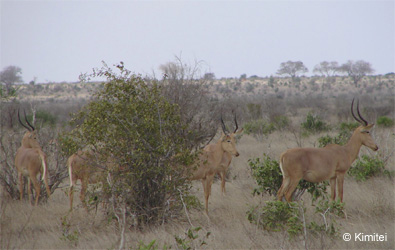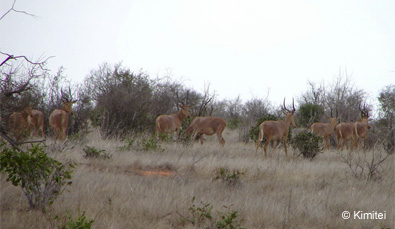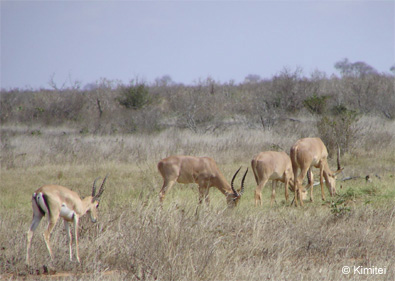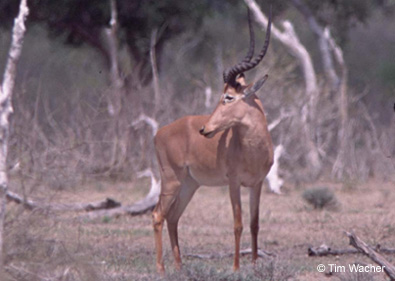Our newest EDGE Fellow, Kimitei, has recently started monitoring a translocated hirola population in Tsavo East National Park, Kenya. His work will gather essential data on the world’s most threatened ungulate, and will report on progress of the translocated population.
Hirola antelope
Kimitei sent us this update:
The project is now 2 weeks old. To have a thorough monitoring of the Tsavo population it is wise to locate the groups within and around the current known range that was developed by Dr. Andanje (Kenya Wildlife Service) in 2002. However, the Tsavo population is approximately 100 strong.
To make sure that almost all, if not all, the groups are recorded the study area is divided into blocks where the groups will be named (group ID) with respect of the block.
Hirola monitoring blocks
I do ground searches in the blocks to locate or relocate the hirola groups but sometimes an aerial recce is done prior. As soon as a group is identified on the ground, I make sure that I identify the group and confirm if it has been identified before. If it has been identified before, then there is no need to give the group a new ID – previous ID is used. If the group is new then a group ID is given.
Individuals with unique features within the groups are used to identify the group to avoid double grouping. These features can be horn shape and size, tail length, scar on the coat, body structure, pregnant or lactating for females. Group size and age structure is used to verify the group.
5 members of the Mukwaju 2 group
Other essential details should be noted. These details are time of the day, GPS coordinates, vegetation (tree and shrub number per 100 sq. meters, herb and grass cover, grass mean height), area % slope and slope direction and altitude, group age and sex structures, associate species and the type of association (close, nearby or aggregate), hirola body conditions (health), their activities, if they are under sun or shade, the nearest hirola group and distance from the group and comments.
This information will be later analyzed to give:
1. Absolute population sizes or estimates in each area, obtained through individual identification
2. Habitat needs and distribution
3. Animal population performance indicators (e.g. percentage of calves in the population, cow/calf ratios, calving intervals, group size)
4. The recruitment rate to Tsavo population
5. The age and sex structure of Tsavo population
The other 9 members of the Mukwaju 2 group
For the 4 days I have been in the field so far I have managed to identify 4 groups, namely:
– M2 (Mukwanju 2) – 14 (1 adult male, 9 adult female and 4 female yearlings)
– SAT (Satao) – 4 (1 adult male, 2 Adult females and 1 female yearling)
– DP (Dika Plains) – 2 (1 adult male and female)
– AB (Aruba Bachuma road) – 3 bachelors (1 adult and 2 sub adults)
If the Tsavo population is 100 this means I have come across 23% (23 individuals) of the population.
The AB bachelor group in close association with grants gazelle
The search will continue in the next 2 weeks and maybe more groups will be identified. As new groups are found and known groups are relocated monitoring will show the hirola dynamics and threats facing them.
If you would like to support the conservation of the most endangered antelope in Africa, please become an EDGE Champion or donate here.
